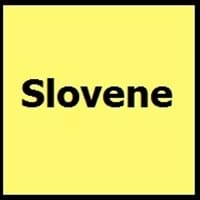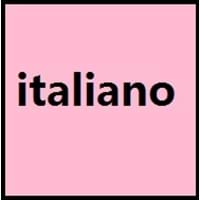Countries
European Union, Slovenia
Croatia, European Union, Italy, San Marino, Slovenia, Switzerland, Vatican City
National Language
Austria, Croatia, Hungary, Italy, Slovenia
Italy, San Marino, Switzerland, Vatican City
Second Language
Not spoken in any of the countries
Albania, Croatia, Malta, Slovenia
Speaking Continents
Europe
Europe
Minority Language
Austria, Hungary, Italy
Crimea, Eritrea, France, Libya, Monaco, Montenegro, Romania, Somalia
Regulated By
Slovenian Academy of Sciences and Arts
Accademia della Crusca (Academy of the bran)
Interesting Facts
- The Freising Monuments is the oldest preserved records of written Slovene from 10th century.
- The first Slovene book was printed in 1550.
- One of the most romantic and melodic language in the history of the world is Italian.
- Italian Language is in the top three of the most widely spoken European languages in Europe.
Similar To
Serbo-Croatian
French and Portuguese Languages
Derived From
Not Available
Latin
Alphabets in
Slovene-Alphabets.jpg#200
Italian-Alphabets.jpg#200
Writing Direction
Left-To-Right, Horizontal
Left-To-Right, Horizontal
How Are You?
Kako se imate?
Come stai?
Good Night
Lahko noč
buonanotte
Good Evening
Dober večer
buonasera
Good Afternoon
Dober dan
buon pomeriggio
Good Morning
Dobro jutro
buongiorno
Bye
Nasvidenje
arrivederci
I Love You
Ljubim te
Ti amo
Excuse Me
Oprostite
Scusami
Dialect 1
Prekmurje Slovene
Romanesco
Where They Speak
Hungary, Slovenia
Lazio
Dialect 2
Resian
Central Italian
Where They Speak
Italy
Abruzzo, central Marche, Lazio, south Tuscany, Umbria
How Many People Speak
Not Available
Where They Speak
Slovenia
Corsica, Gallura, Haute-Corse, Sardinia, Tuscany, Umbria
Speaking Population
Not Available
Second Language Speakers
Not Available
Native Name
Not available
Italiano
Alternative Names
Slovenian, Slovenscina
Italiano
French Name
slovène
italien
German Name
Slowenisch
Italienisch
Pronunciation
[slɔˈʋèːnski ˈjɛ̀ːzik], [slɔˈʋèːnʃt͡ʃina]
[itaˈljaːno]
Ethnicity
Slovenes
Italians
Language Family
Indo-European Family
Indo-European Family
Subgroup
Not Available
Romance
Branch
Not Available
Not Available
Early Forms
No early forms
No early forms
Standard Forms
Slovene
Italian
Language Position
Not Available
Signed Forms
Not Available
italiano segnato "Signed Italian" & italiano segnato esatto "Signed Exact Italian"
Scope
Individual
Individual
ISO 639 6
Not Available
itas
Glottocode
slov1268
ital1282
Linguasphere
53-AAA-f
51-AAA-q
Language Type
Living
Living
Language Linguistic Typology
Not Available
Subject-Verb-Object
Language Morphological Typology
Fusional
Fusional, Synthetic
All Slovene and Italian Dialects
Most languages have dialects where each dialect differ from other dialect with respect to grammar and vocabulary. Here you will get to know all Slovene and Italian dialects. Various dialects of Slovene and Italian language differ in their pronunciations and words. Dialects of Slovene are spoken in different Slovene Speaking Countries whereas Italian Dialects are spoken in different Italian speaking countries. Also the number of people speaking Slovene vs Italian Dialects varies from few thousands to many millions. Some of the Slovene dialects include: Prekmurje Slovene, Resian. Italian dialects include: Romanesco , Central Italian. Also learn about dialects in South American Languages and North American Languages.
Slovene and Italian Speaking population
Slovene and Italian speaking population is one of the factors based on which Slovene and Italian languages can be compared. The total count of Slovene and Italian Speaking population in percentage is also given. The percentage of people speaking Slovene language is Not Available whereas the percentage of people speaking Italian language is 0.90 %. When we compare the speaking population of any two languages we get to know which of two languages is more popular. Find more details about how many people speak Slovene and Italian on Slovene vs Italian where you will get native speakers, speaking population in percentage and native names.
Slovene and Italian Language Codes
Slovene and Italian language codes are used in those applications where using language names are tedious. Slovene and Italian Language Codes include all the international language codes, glottocodes and linguasphere.





